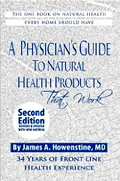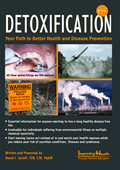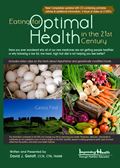LINKING EAR INFECTIONS, HYPERACTIVE BEHAVIOR & FUTURE HEALTH
By
Byron J. Richards, CCN
October 12, 2013
NewsWithViews.com
A
new animal
study has documented a precise mechanism by which disturbances to
the ear’s hearing and balance systems cause hyperactive  behavior.
Since such damage can occur in humans from infections, especially recurring
ear infections, the study sheds light on the importance of helping children
not get too many ear infections as well as fully recovering from them.
behavior.
Since such damage can occur in humans from infections, especially recurring
ear infections, the study sheds light on the importance of helping children
not get too many ear infections as well as fully recovering from them.
The correlation between ear infections and subsequent behavioral issues such as ADHD has been noted in the literature for some time. A 1990 study of 138 children found that ear infections and consequent middle ear disease was associated with hyperactivity and inattention.
Children with a history of ear infection often have concurring sinus issues or develop them after treatment for ear infections, causing abnormal wear and tear to the mucosal immune system in the closely related sinus/ear pathways. Researchers have shown that this inefficiency in immune function (allergic rhinitis) is clearly linked to sleep disturbances, poor school performance, and hyperactivity.
Sore throats are another common infection, especially in children with sinus and ear issues. A third study linked streptococcal infection (sore throat) to the development of ADHD and multiple other behavioral neurologic disorders.
We have known for decades that infections pose several challenges to the developing nervous system. Infections produce toxic waste products that can damage the brain. The antibiotics often used to combat infection are also toxic and induce brain wear and tear. The greater the number of infections and/or the more severe they are, the greater the risk for toxic exposure in the brain.
In the case of ear infections, there is also a risk for injury to the important structures of the ear. The inner ear consists of two structures, the cochlea (responsible for hearing) and the vestibular system (responsible for balance). The new study proved that injury to these systems could by itself cause hyperactive behavior, as different from toxin-induced wear and tear. “Our study provides the first evidence that a sensory impairment, such as inner-ear dysfunction, can induce specific molecular changes in the brain that cause maladaptive behaviors traditionally considered to originate exclusively in the brain,” said study leader Jean M. Hébert, Ph.D., professor in the Dominick P. Purpura Department of Neuroscience and of genetics at Einstein.
The study is quite interesting as it highlights the fact that brain function integrates sensory input for proper calculations. It is pretty obvious that without a sense of balance survival is unlikely. Through a series of novel experiments the researchers were able to show that the hyperactive behavior problem could be caused by faulty sensory input coming from the inner ears, rather than the brain itself. This is an important study as it expands our understanding of what is needed for full ear infection recovery.
From a practical point of view this speaks to the importance of preventing ear infections in the first place, especially recurring ear infections. It is also important to fully recover the health of the inner ear structure, as different from simply ensuring an infection is gone. The idea is to repair the bridges and buildings that were damaged in battle.
While Western medicine will interpret this data to mean more aggressive treatments for ear infections, that is what they have been doing for years with a concurrent increase in societal ADHD in our children. A more encompassing understanding of health works to solve not only the ear issues themselves but problems in directly related systems of function. This is the best way to return actual health to the individual.
For example, the middle ear is connected to the throat via the 1.5 inch long auditory tube (Eustachian tube). This tube conducts air from the outside of the ears through the throat and mouth in a way that maintains proper pressure balance, required for normal hearing. This physical connection means that infections in the sinus or throat can easily move to the inner ear. These connected passageways can often become inflamed (such as allergic rhinitis) and even when there is not an active infection a person is more at risk because the tissues and immune system that patrols them are stressed and often inefficient.
Furthermore, the “trash” collecting in these systems must drain downward into the major lymphatic system, another pressure system that can be backed up. Once the lymph system is congested then pressure is abnormally pushed upwards into the head, reducing the flow of trash out of the head and backing up pressure to the inner ears – setting the stage for ongoing infection in the ears, sinuses, and/or throat.
The lymph system is highly associated with the digestive tract, both in terms of the digestion of food as well as overall immune function. Major issues for the health of infants and young children is the natural development of both their digestive systems and immune systems. Their efficiency needs to be built up over time. It is during this time that inefficient function enables infections to take hold and become recurring if the entire health situation is not actively managed.
Because there is no quick fix for these developing systems, parents can become frustrated and turn to medical remedies – which are unusually backwards for a society that considers itself modern. We have a generation of children being given antacids, allergy meds, antibiotics, and eventually having ear tubes put in. We can do better.
Diet Correction
Too much saturated fat and especially too much refined or concentrated sugar can contribute to inefficient function of the lymphatic system that sets the stage for recurring ear problems.
Fat is absorbed into the lymphatic system during normal digestion. It travels from the digestive lymphatics to one of the two major thoracic ducts in the left shoulder area (the other is on the right side), and eventually enters the circulation to be used as nutrition. If the lymph system is already sluggish or congested, the fat runs into the stagnation and further builds up pressure in the lymphatics that backs pressure up on the ears. This problem is the norm in children with recurring ear infections. Doctors would rather install pressure-releasing tubes than fix the source of the problem.
This is why excessive intake of fats, as is common in a high dairy diet of an infant, can be problematic. I am not an anti-dairy advocate. I am simply pointing out that too much fat in a struggling lymph system may aggravate or even perpetuate the problem. The goal isn’t to eliminate dairy, but to be mindful of this issue as it may be important. Reducing or eliminating dairy fat during ear infection may be quite helpful. And the amount thereafter should be monitored for a while to ensure full recovery.
The bottom line is that dairy and the fat it contains is excellent nutrition but too much of it in a struggling lymph system may further congest the system. This means cut back and pay attention. Too much mucous or stuffiness after eating is a sign of too much fat in the meal, which is also a sign of a less than efficient lymph system. As a parent, the goal is to help your child develop the digestive skill to handle a wide variety of healthy foods. The idea that dairy should forever be eliminated because it was linked to ear infections is not a correct concept.
High sugar intake is actually the primary problem behind ear infections and other immune weaknesses. High sugar creates bacterial and yeast imbalance in the digestive tract and sinuses. This causes excessive trash in the ear-nose-throat as well as toxic trash coming from the digestive tract that enters the lymph system when any type of fat is consumed. Major offenders are any packaged foods with added sugar. Sugar or high-fructose sweetened beverages are the worst offenders. All of these should be eliminated as much as possible from the diet of a child prone to infections.
Fresh fruit tends not to be a problem, as it also contains the flavonoids that help immunity while helping to correctly metabolize the sugar. Fruit juice, which has a higher-than-normal concentration of sugar may or may not be a problem, depending on the person – pay attention.
High quality yogurt can help restore digestive balance, and is generally a good food for breakfast for young children. Fresh fruit versions can be purchased or fruit can be added. Avoid brands with added sweeteners.
Training a child’s taste system to enjoy healthy foods is a major task and sometimes a lot of work – and vital to the future health and well-being of the child. When parents don’t persist or never try, their children end up addicted to the flavors of fat, salt, and sugar. They are easy prey for the addictive flavoring concoctions of junk food makers. Their immune systems will pay a price in their younger years and their human potential and quality of health will be at risk throughout their entire life.
Nutrient Support for Infants and Young Children
They are a variety of natural support options for those too young to swallow vitamins as part of diet support for inefficient function that compromises key aspects of digestion, lymph function, and immunity.
Grape seed extract is one of the best fruit-derived flavonoids for strengthening body structures, including the nervous system and ear structures. A capsule per day or every other day can be mixed in just about anything, as it tastes like dried grapes.
My favorite lymph support nutrient for infants and children is arabinogalactan that has been specially filters for molecular weights that support immune function. This powder easily dissolves in a few ounces of room temperature water if left standing for 30 seconds, with only a slight taste. It can then be consumed directly or mixed in anything else. Doses range from ¼ tsp to a full tsp. Since it is a type of carbohydrate it is non-toxic in any dose, making it a good choice.
An excellent children’s multivitamin is a basic. Quality matters, both in terms of the types of vitamins that are in the product and the lack of added sweeteners. Since almost all sweeteners used in children’s multiples have issues of one type or another, I like small capsules that can be pulled apart and mixed into a variety of food options – even if its only a ¼ to ½ capsule every now and then. As children get a little older such small capsules are typically the first vitamin they will be able to swallow.
Extra iodine becomes important when immune system weaknesses are common. Liquid iodine can be placed in water and then a tablespoon or two of the dilution can be taken (a suitable dose for a young person). Iodine, from an evolutionary point of view, was likely the most important nutrient for front-line immune defense of the upper respiratory and digestive systems. It is taken up by the salivary glands and lacrimal glands of the eyes, wherein it assists immune defense.
Some children will benefit from friendly flora beyond what is in yogurt, especially if they have been through antibiotics. Any sort of indigestion symptoms should be worked on with the goal of training and improvement over time. Numerous nutrients can help if there is a flare up of an issue. One of my favorites is specially filtered whey protein that has a high concentration of digestive and immune support compounds.
Summary
Developing a healthy immune system and digestive system are two of the most important learning tasks of infants and small children. It is fine, even desirable, for either of these systems to be “tested” as part of the learning process. What we don’t want is either system getting overloaded in the wrong direction and learning lessons of inefficiency.
These are core survival systems, and like any survival system, they thrive on predictability and stability as they develop. Many factors are involved. A better quality diet is important and dietary supplements may be used as needed to help bolster better function. Other important factors of stability include the living environment and especially the stability of mom and dad, on whom their survival depends. Arguments are destabilizing and often precede infection – meaning try to minimize instability as much as possible as a child is learning these basic lessons of health.
| Subscribe to the NewsWithViews Daily News Alerts! |
It is always hard to watch your little one come down with an infection. I am not in any way suggesting that you replace appropriate medical care with suggestions I have given, although they may be integrated with your physician’s knowledge into their care. My suggestions are about helping to improve your child’s trend so that they are more able to develop better immune and digestive function. Such strategies can help develop better function as the months go by and play an important role in future quality of health.
� 2013 Wellness Resources, Inc. - All Rights Reserved






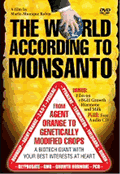

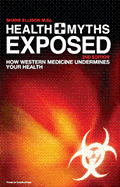







 Share
This Article
Share
This Article
